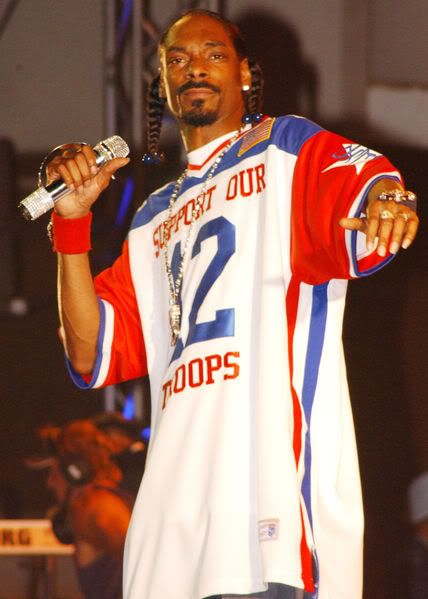DIRECT DOWNLOAD VIDEOS
Published Sunday, May 28, 2006 by WHOSANE.
Size: 57.6 MB
Ripped by: PieNr1
Password: www.Muthafka-Vidz.com
DOWNLOAD
Rouge feat. Juelz Santana - Don’t Be Shy (Remix)

Size: 47.2 MB
Ripped by: PieNr1
Password: www.Muthafka-Vidz.com
DOWNLOAD
Nivea - Run Away

Size: 47.3 MB
Ripped by: PieNr1
Password: www.Muthafka-Vidz.com
DOWNLOAD
Daddy Yankee feat. G-Unit - Rompe (Remix) [MMV]

Size: 50.8 MB
Ripped by: dvs
Password: www.Muthafka-Vidz.com
DOWNLOAD
DMX - We In Here [MMV]

Size: 51.5 MB
Ripped by: PieNr1
Password: www.Muthafka-Vidz.com
DOWNLOAD
Too Short - Blow The Whistle [MMV]

Size: 43.2 MB
Ripped by: dvs
Password: www.Muthafka-Vidz.com
DOWNLOAD
Monica feat. Missy Elliot - So Gone [MMV]

Size: 52.7 MB
Ripped by: PieNr1
Password: www.Muthafka-Vidz.com
DOWNLOAD
THE HISTORY OF RAPPING
Published Wednesday, May 24, 2006 by WHOSANE.Rapping in hip hop music can be traced back in many ways to its African roots. Centuries before the United States existed, the griots (folk poets) of West Africa were rhythmically delivering stories over drums and sparse instrumentation. Because of the time that has passed since the griots of old, the connections between rap and the African griots are widely recognized, but not clear–cut. However, such connections have been acknowledged by rappers, modern day "griots", spoken-word artists, mainstream news sources, and academics.[4][5][6][7]
Blues music, rooted in the work songs and spirituals of slavery, was created by Blacks (and some Whites) in the Mississippi Delta region of the United States around the time of the Emancipation Proclamation. According to several musical historians, the blues were being rapped as early as the 1920s.[8][9] In fact, Grammy-winning blues musician/historian Elijah Wald has referred to hip hop as "the living blues."[8] Music critics and historians have observed similarities between the delivery and lyrical content of blues and modern rap lyrics.
Jazz, largely developed from the blues, originated around the beginning of the 20th century. Improvised jazz singing, called vocalese, is often compared by musicians and music critics to the freestyling of rappers within hip hop. Freestyling has also been said to derive from the art of improvising songs that often distinguishes jazz. Jazz has influenced hip hop greatly throughout its entire history; the scat singing of jazz could be heard in the seminal 1979 old school hip hop song "Rapper's Delight" by the Sugarhill Gang. To this day, jazz musicians such as Miles Davis and Herbie Hancock collaborate with rappers, creating a sound that blurs genre lines.
During the mid-20th century, the musical culture of Jamaica was constantly influenced by the concurrent changes in American music. In the 1950s, the descendants of Jamaican slaves were mixing their traditional folk music styles of calypso, mento, and soca with the jazz, soul, and rock of America. This fusion led to the creation of ska and eventually reggae. As early as 1969, Deejays were toasting (an African tradition of "rapped out" tales of heroism) over dubbed Jamaican beats.
The dubbed dancehall toasts of Jamaica, as well as the disco-rapping and jazz-based spoken word beat poetry of the United States set the template for the rapping in hip hop music. One of the first rappers in hip hop was also hip hop's first DJ— Kool Herc. Herc, a Jamaican immigrant, started delivering simple raps at his parties in the early 1970s. As Herc would explain in a 1989 interview, "[t]he whole chemistry came from Jamaica. I was listening to American music in Jamaica, and my favorite artist was James Brown. When I came over here I just had to put it in the American style." [10]
By the end of the 1970s, hip hop had spread throughout New York, and was getting some radio play. Rappers were increasingly writing songs that fit pop music structures and featured continuous rhymes. Melle Mel (of The Furious Five) stands out as one of the earliest rap innovators. From the 1970s to the early 1980s, Melle Mel set the way for future rappers through his sociopolitical content as well as his creative wordplay.
Hip hop lyricism saw its biggest change with the popularity of Run-DMC's Raising Hell in the mid-1980s. This album helped set the tone of toughness and lyrical prowess in hip hop; Run-DMC were almost yelling their aggressive lyrics. Run-DMC exerted an enormous influence on the greatly experimental golden age of hip hop, which would last until 1993. In golden age rap, internal rhyme schemes and varying cadences were commonplace. Rhyme styles continue to develop throughout the world to this day.The Birth Of RAP
Published Wednesday, May 17, 2006 by WHOSANE.Rappi ng, the rhythmic delivery of rhymes, is one of the central elements of hip hop culture and music. It can be delivered over a beat or acapella — without accompaniment. Stylistically, rap occupies a gray area between speech, poetry, prose, and song.
ng, the rhythmic delivery of rhymes, is one of the central elements of hip hop culture and music. It can be delivered over a beat or acapella — without accompaniment. Stylistically, rap occupies a gray area between speech, poetry, prose, and song.
Derived from African, Jamaican, and American roots, rap has developed both inside and outside of hip hop since the early 1970's. Modern rappers deliver stylized, rhythmic raps often with complex rhymes and wordplay. To showcase their skills rappers often compete in freestyle battles in which they ridicule their opponents with improvised rhymes. Although rap has become an international phenomenon through hip hop culture and music, issues concerning racial, class, and sexual identity remain among rappers and their audiences.
About me
- I'm WHOSANE
- From India
- My profile